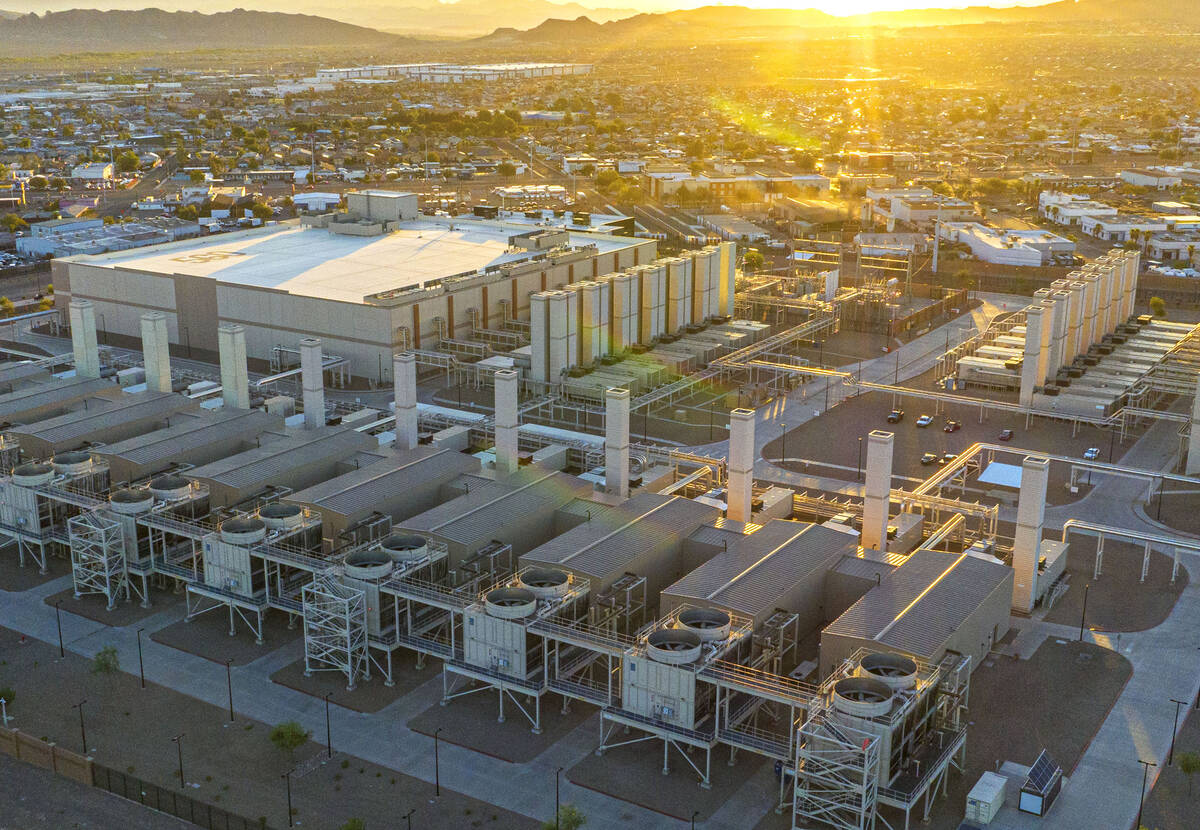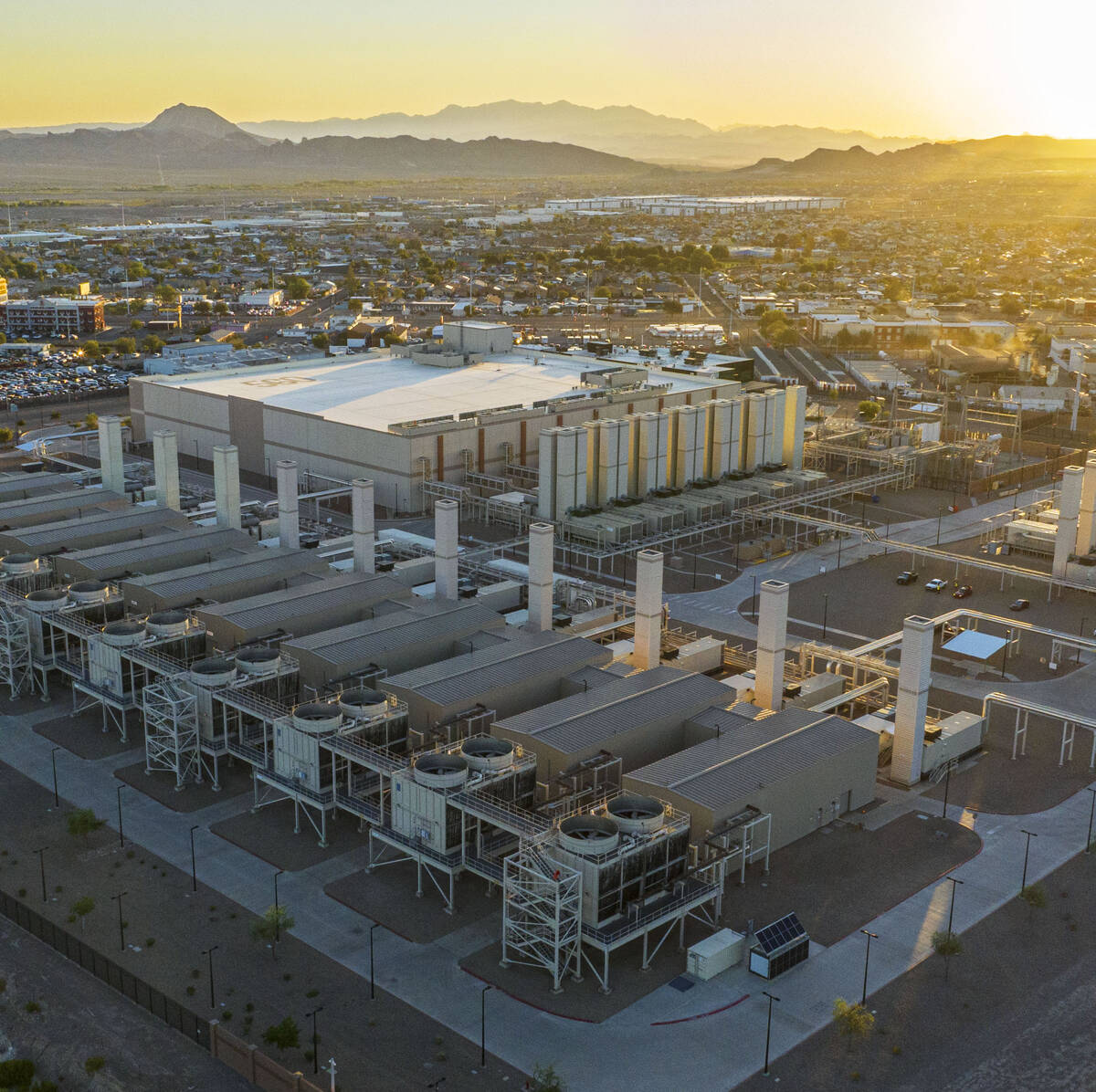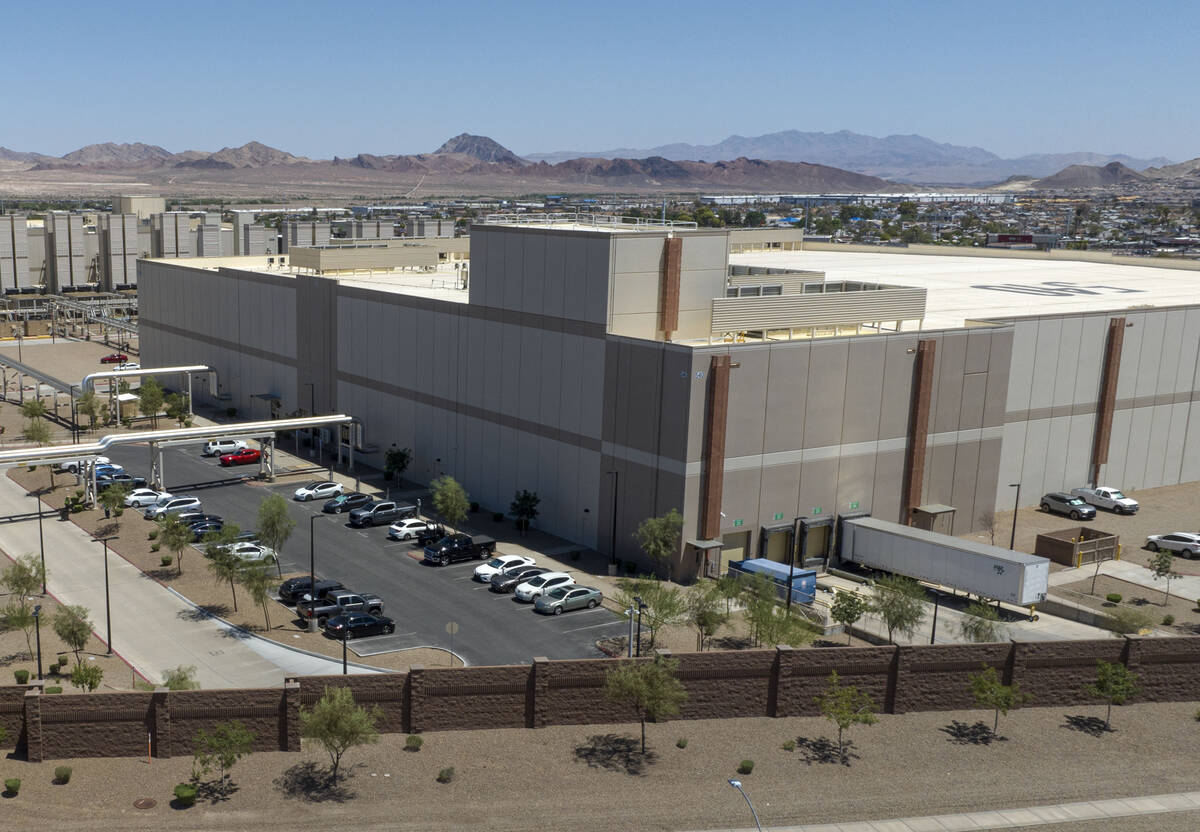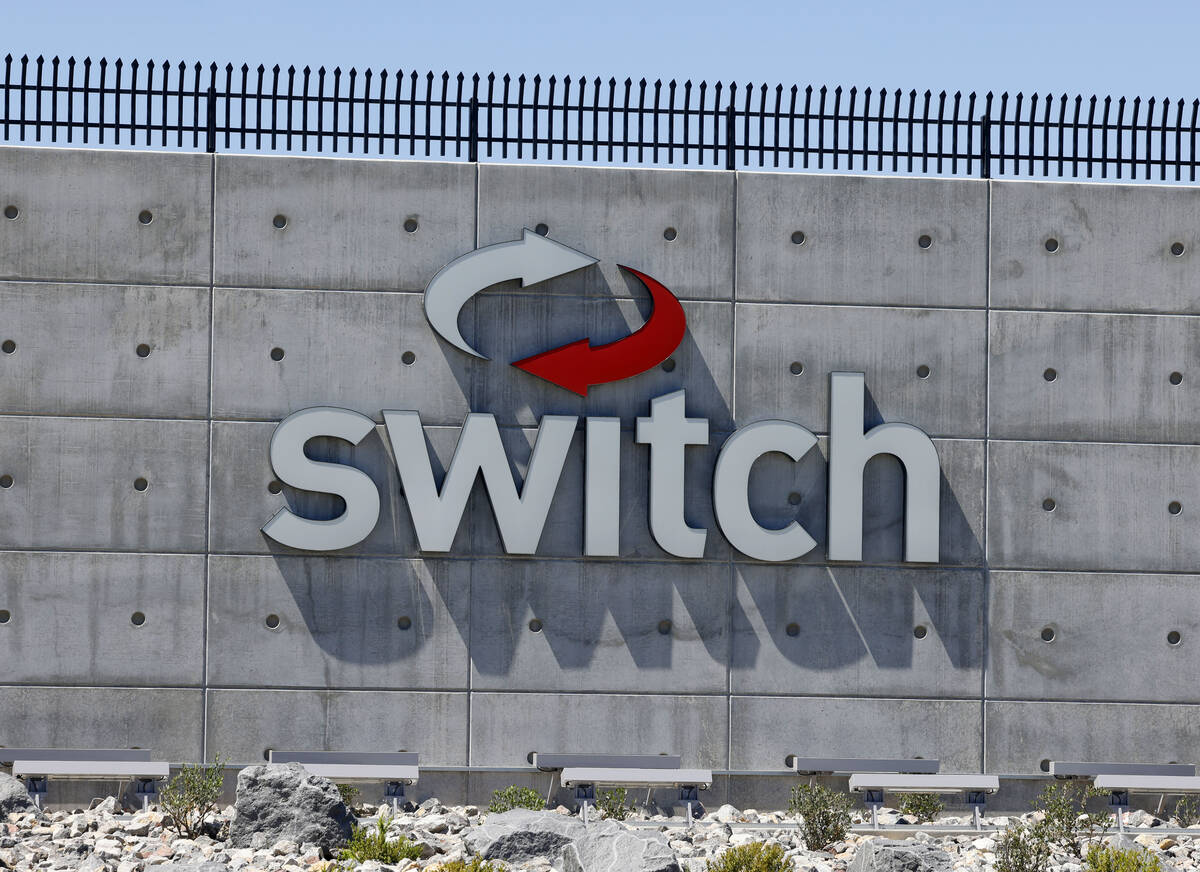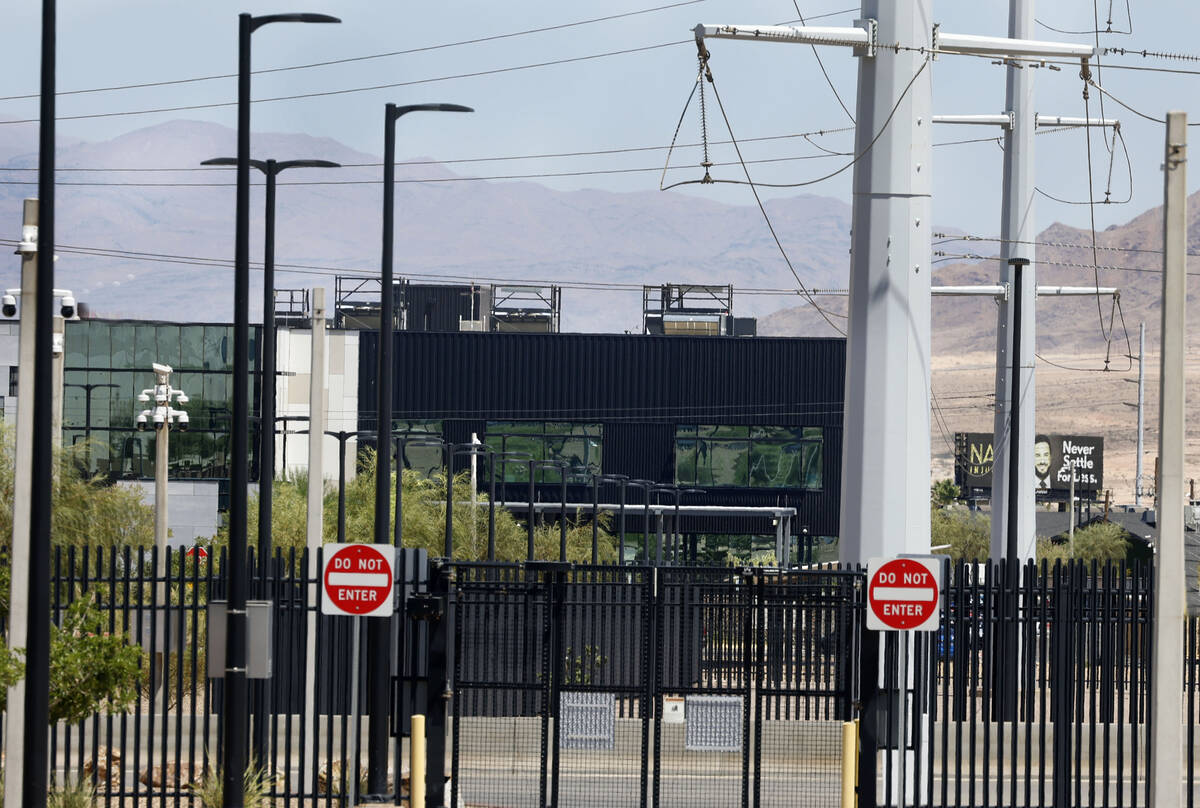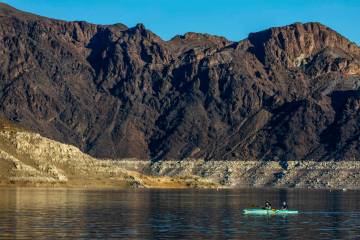Nevada’s data center boom is a power, water conundrum
Nevadans could one day be stuck with higher energy bills, an overwhelmed power grid and an even drier desert because of data centers that store cloud data and power search engines.
Often untold drawbacks of the West’s data center boom are outlined in a report from the nonprofit Western Resource Advocates released last week, pointing to policies it says states and utility commissions should consider to better regulate an emerging industry it warns could devastate natural resources.
In Nevada, the projected growth — and the volume of energy and water needed to sustain it — is indeed remarkable, said Deborah Kapiloff, a report author and policy adviser at the nonprofit.
“Over the next 20 years, these utility projections are saying, essentially, that we need to double Nevada’s electrical infrastructure to accommodate these customers,” Kapiloff said. “We need to make sure that everyday Nevadans are not paying for that.”
‘Protecting customers from higher costs’
In a statement, NV Energy spokeswoman Meghin Delaney said the utility is “setting up agreements to ensure new growth pays its own way, protecting existing customers from higher costs.”
She pointed to a slew of power purchase agreements approved in the 2024 Integrated Resource Plan (IRP), as well as the 400-megawatt Sierra Solar and Battery Energy Storage System in Churchill County. The utility’s two multibillion-dollar Greenlink transmission lines that will accommodate more energy projects in rural areas are moving forward, as well.
Through April, residential power rates were 55.4 percent lower than California and 14.8 percent lower than the U.S. average, Delaney added.
Load growth estimates in NV Energy’s IRP nearly doubled from 2021 to 2024, with the utility acknowledging that major data center projects are the driving factor behind the increase.
Water-intensive data centers will place a strain on both the Colorado and Truckee Rivers, the lifelines of desert living in the nation’s driest state, according to the report and Olivia Tanager, director of the Nevada chapter of the Sierra Club.
“It’s a question of, do we want to use our water resources for data centers and AI so that seventh graders can get out of having to do their homework?” said Tanager, referring to the rise of the AI-powered ChatGPT search engine. “Or, would we rather use those resources elsewhere?”
Divide between north and south
The data center outlook differs widely depending on where companies are looking to establish themselves.
Southern Nevada’s ban on so-called evaporative cooling, solidified valley-wide in February 2024, limits the types of allowed cooling systems. When water evaporates, it cannot be captured and sent back to Lake Mead like almost all other indoor water use in the region.
The Southern Nevada Water Authority has the authority to reject the most water-intensive data center types because of the ban, agency spokesman Bronson Mack said. A failed effort in this year’s legislative session from Assemblymember Lisa Cole, R-Las Vegas, would have prevented the water authority from implementing the ban.
“As new data centers — or really any large water user — is coming into Las Vegas, we are utilizing the best policies that we have to be able to minimize their consumption of the community’s water supply,” Mack said. “If somebody came in with an evaporative cooling system in their development today, they would not get development approval.”
Existing data centers approved before the ban took effect are using massive amounts of water in Southern Nevada. The heaviest user by far is Google’s data center in Henderson, consuming 352 million gallons of water in 2024, according to data obtained by the Las Vegas Review-Journal. That figure represents only water that was not recycled or sent back to Lake Mead.
Circumstances are different in Northern Nevada, where tech companies and their data centers have descended on the massive Tahoe-Reno Industrial Center, a business park the size of Detroit.
With a need for six gigawatts of electricity capacity and billions of gallons of water annually, the Reno metro area is on its way to becoming a world hub for data centers, according to a May MIT Technology Review investigation.
Where some see an environmental crisis, others like Scott Whittemore of Las Vegas-based consulting firm Energy Project Solutions see an immense economic opportunity.
Whittemore, who works with tech companies to secure power delivery, said the single factor driving decisions about data center placement at the moment is whether investor-owned utilities across the country have capacity to accommodate them.
“The crisis is, how fast can we deploy energy generation assets? How fast can we meet the demand so that the data centers don’t go elsewhere?” Whittemore said.
Innovation fast, guardrails not so much
The constraints of Nevada’s harsh desert environment and diminished grid capacity has inspired data center innovation across the board, said Taylor Adams, CEO of the Economic Development Authority of Western Nevada.
Southern Nevada’s evaporative cooling ban is inspiring new techniques to use less water; a 16-mile pipeline will be used near Reno to make use of effluent wastewater for cooling, and some companies are exploring ways to generate their own power to avoid fully tapping into NV Energy’s grid.
“Everyone is rightly talking about power and water for and the implication that it will have on communities in the development of data centers in the present,” Adams said. “But I would offer we’re already seeing new technologies coming to market that mitigate those demands.”
In the meantime, advocates are pushing for more regulation.
Protecting everyday Nevadans from footing the bill for grid establishment is one of Tanager’s priorities as a leading voice in elevating environmental concerns in local government meetings. A moratorium on data center construction her group proposed at the Reno City Council was eventually shot down, and the group has been unsuccessful in stopping the approval of any data center so far.
Tanager said she would like to see Nevada pass similar legislation in 2027 to Oregon’s POWER Act, a law that places data centers into their own utility consumer class that must pay for grid expansion.
Nevada set an example, too, in securing an agreement with Google and NV Energy to develop a geothermal project via a clean transition tariff proposal. In essence, NV Energy buys the power, sells it to Google and Google gets credit on its bill for the project’s energy generation.
It’s going to take every part of the energy sector — solar, wind, geothermal and natural gas — to get Nevada up to speed, said Whittemore, the data center energy consultant.
“The boom is here, and the genie is out of the bottle,” he said. “Now, the question becomes, where do we want these things to be built, and how can we do it in a smart way?”
Contact Alan Halaly at ahalaly@reviewjournal.com. Follow @AlanHalaly on X. Review-Journal intern Finnegan Belleau contributed to this report.
Are data center tax breaks worth the investment?
Nevada leaders have taken action to make the state a more friendly place for data centers.
The Governor's Office of Economic Development has both a 10-and 20-year tax abatement package, allowing for a 75 percent personal property tax cut and a 2 percent sales tax cut if they meet certain requirements for staff size and profits generated.
Those aren't free, however: A nonprofit report published in April showed Nevada lost close to $140 million in revenue from the tax abatement structure. Tanager, of the Sierra Club, said the state budget shortfall of $191 million displayed in the last legislative session exhibited how little money the state has to spare.
"The state should consider eliminating tax abatements for data centers and only bring the best of the best data centers that are going to work with our communities and with local elected officials to ameliorate the concerns associated with the development," Tanager said.
To business leaders like Taylor Adams, CEO of the Economic Development Authority of Western Nevada, the abatements are a worthy investment to benefit the tech industry.
Data centers can be a lifeline for struggling local governments that benefit from tax revenue, and provide an insular source of revenue that is largely immune to economic recessions, Adams said. Like Whittemore, Adams said power generation capacity — not abatements — is the driving force behind present tech executive decisions.
"They're not overburdening traffic infrastructure; They don't require huge parking fields that contribute to urban heat islands; They don't require an abundance of public safety support," Adams said. "When I look at the at the some of the budgetary challenges that are facing cities and counties in Nevada in the coming years, I do think that there's some real merit to considering data centers in the short term."




